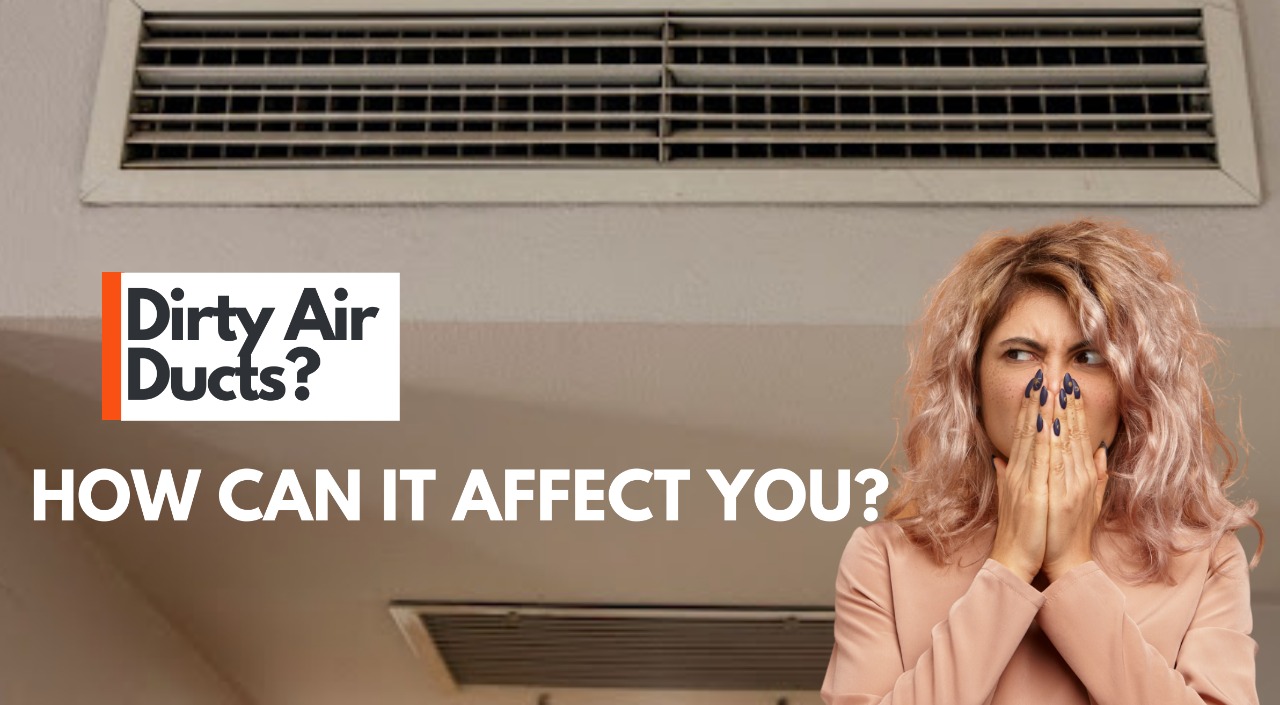When it comes to maintaining a healthy living environment, the cleanliness of our air ducts plays a vital role. Dirty air ducts can harbor various contaminants that negatively has health implications indoor air quality. In this blog, we will explore the health implications of dirty air ducts, using transition words and concise phrases to navigate through the risks, common pollutants, symptoms, prevention, and professional cleaning. Let’s delve into the topic and understand why clean air ducts are crucial for our well-being.
Understanding the Risks Associated with Dirty Air Ducts:
Transition words like “first and foremost,” “primarily,” and “initially” will introduce the concept of understanding the risks associated with dirty air ducts. When neglected, air ducts become breeding grounds for contaminants such as dust, pollen, mold spores, bacteria, and even pest droppings. These pollutants circulate through the ductwork and can pose serious health risks to occupants.
Common Health Pollutants Found in Dirty Air Ducts:
Transition phrases such as “moving on to,” “next,” and “subsequently” will guide us to the next point about common health pollutants found in dirty air ducts. Dust mites, mold spores, pet dander, pollen, and volatile organic compounds (VOCs) are frequently found in neglected air ducts. These substances can trigger allergies, respiratory issues, and even contribute to the development of asthma or other respiratory conditions.
Recognizing Symptoms of Poor Indoor Air Quality:
Transition words like “furthermore,” “moreover,” and “in addition” will introduce the concept of recognizing symptoms of poor indoor air quality caused by dirty air ducts. Symptoms may include persistent coughing, sneezing, itchy or watery eyes, congestion, headaches, fatigue, or worsening of existing respiratory conditions. These signs indicate the need to investigate and potentially clean the air ducts.
Preventive Measures for Maintaining Clean Air Ducts:
Transition phrases such as “moving forward,” “progressing to,” and “advancing to” will highlight preventive measures for maintaining clean air ducts. Regular maintenance and cleaning of air ducts are essential. Homeowners should ensure proper ventilation, use high-quality air filters, control humidity levels, and minimize the presence of potential contaminants to reduce the accumulation of dirt and pollutants in the duct system.
The Role of Professional Air Duct Cleaning:
Transition words like “meanwhile,” “in the meantime,” and “at the same time” will introduce the concept of the role of professional air duct cleaning. Professional air duct cleaning services employ specialized equipment and techniques to thoroughly remove accumulated debris, dust, and contaminants from the air ducts. Expert technicians can identify and address specific issues, ensuring a comprehensive cleaning process.
Benefits of Clean Air Ducts on Health and Well-being:
Transition phrases such as “additionally,” “besides,” and “more importantly” will emphasize the benefits of clean air ducts on health and well-being. Clean air ducts promote improved indoor air quality, reducing the risk of respiratory issues, allergies, and other health problems. Breathing in clean air contributes to better sleep, increased productivity, and an overall healthier living environment.
Maintaining a Regular Air Duct Cleaning Schedule:
Transition words like “simultaneously,” “concurrently,” and “in parallel” will introduce the concept of maintaining a regular air duct cleaning schedule. Establishing a routine maintenance schedule for air duct cleaning ensures consistent removal of contaminants and prevents their buildup. Factors such as the age of the property, occupant sensitivity to allergens, and environmental conditions may influence the frequency of cleaning.
Encouraging Healthy Indoor Air Practices:
Transition phrases such as “in conclusion,” “to sum up,” and “to wrap it up” will emphasize the importance of encouraging healthy indoor air practices. Besides regular air duct cleaning, promoting good indoor air quality habits such as proper ventilation, regular vacuuming, reducing clutter, and using eco-friendly cleaning products contributes to a healthier living environment.
Conclusion:
The health implications of dirty air ducts should not be underestimated. Transition words and concise phrases have guided us through the risks, common pollutants, symptoms, prevention, and the role of professional cleaning. By recognizing the importance of clean air ducts and implementing preventive measures, we can safeguard indoor air quality, promote well-being, and create a healthier living environment for ourselves and our loved ones.

